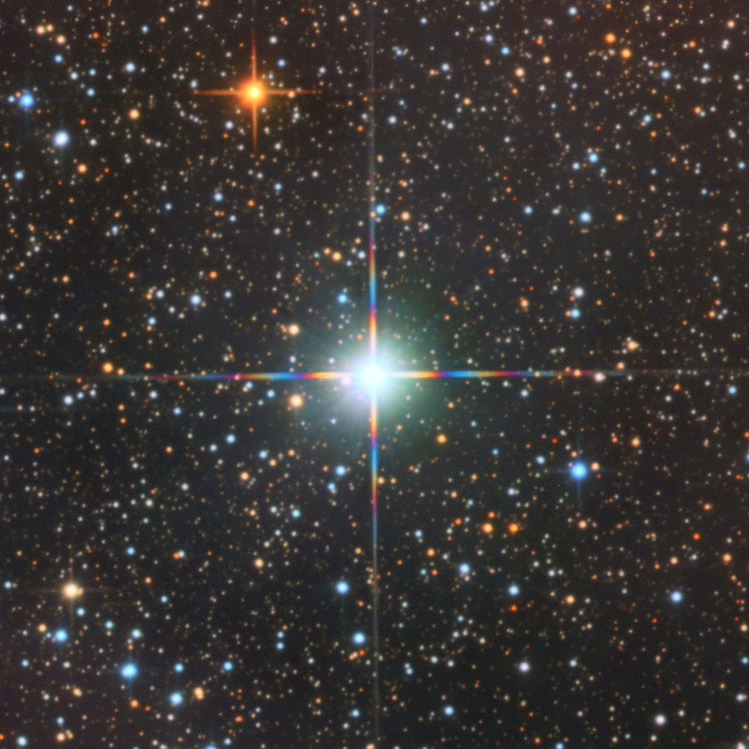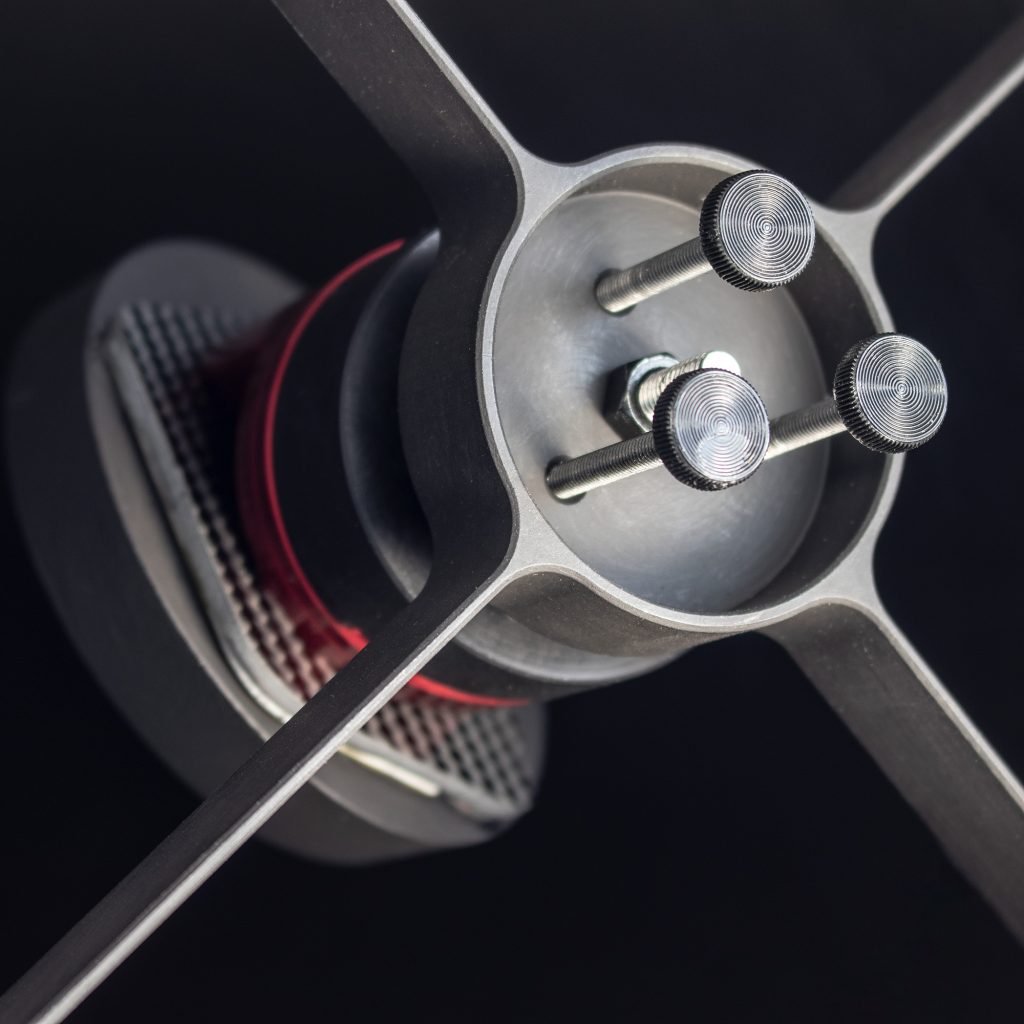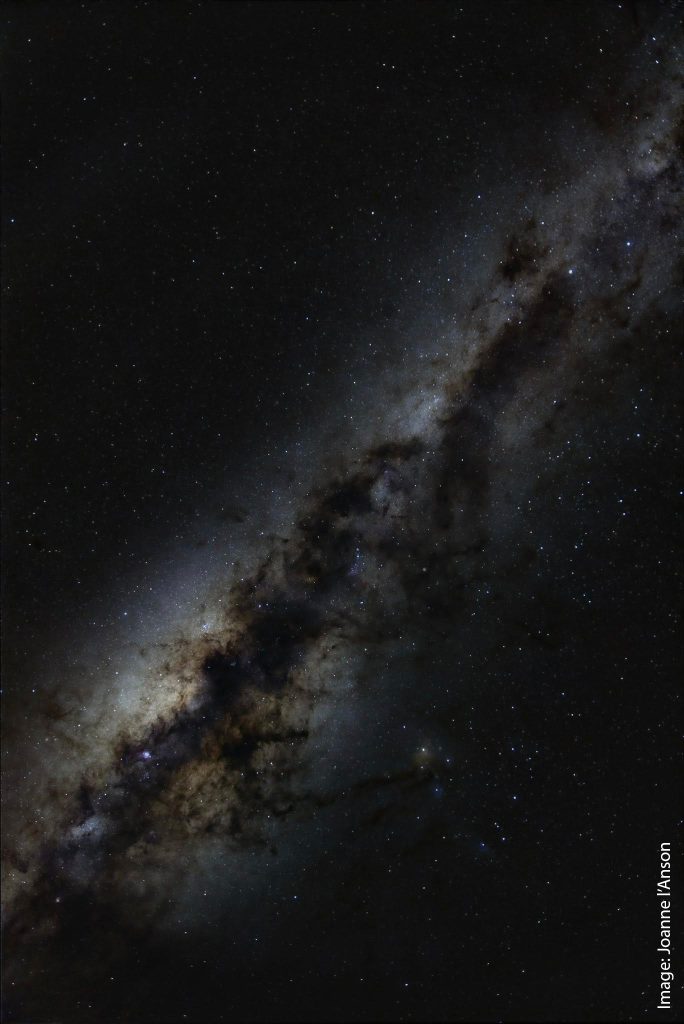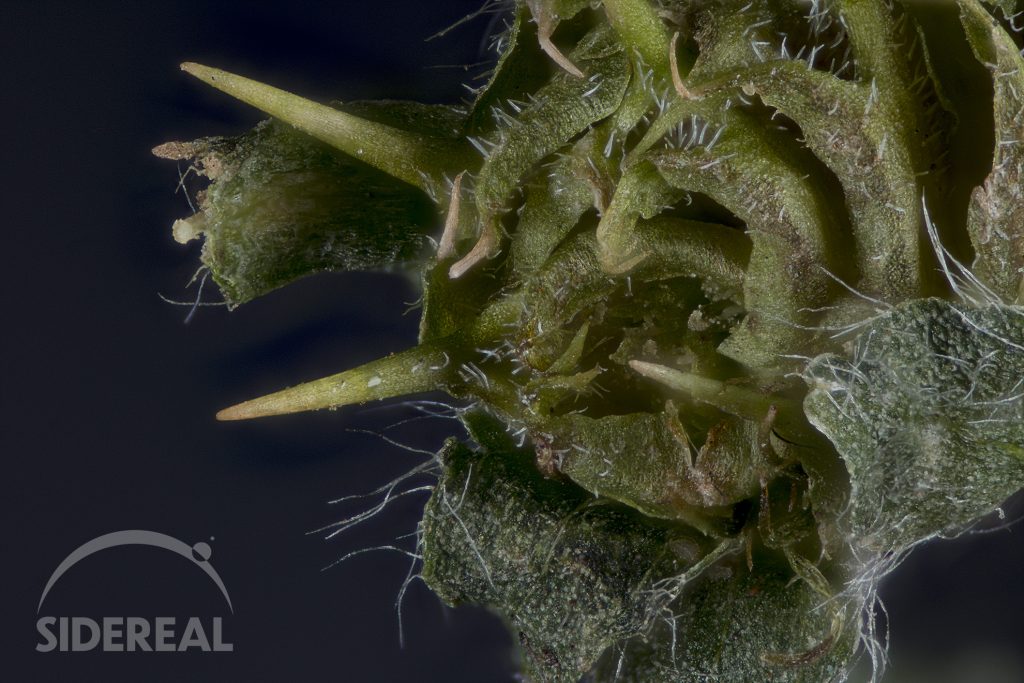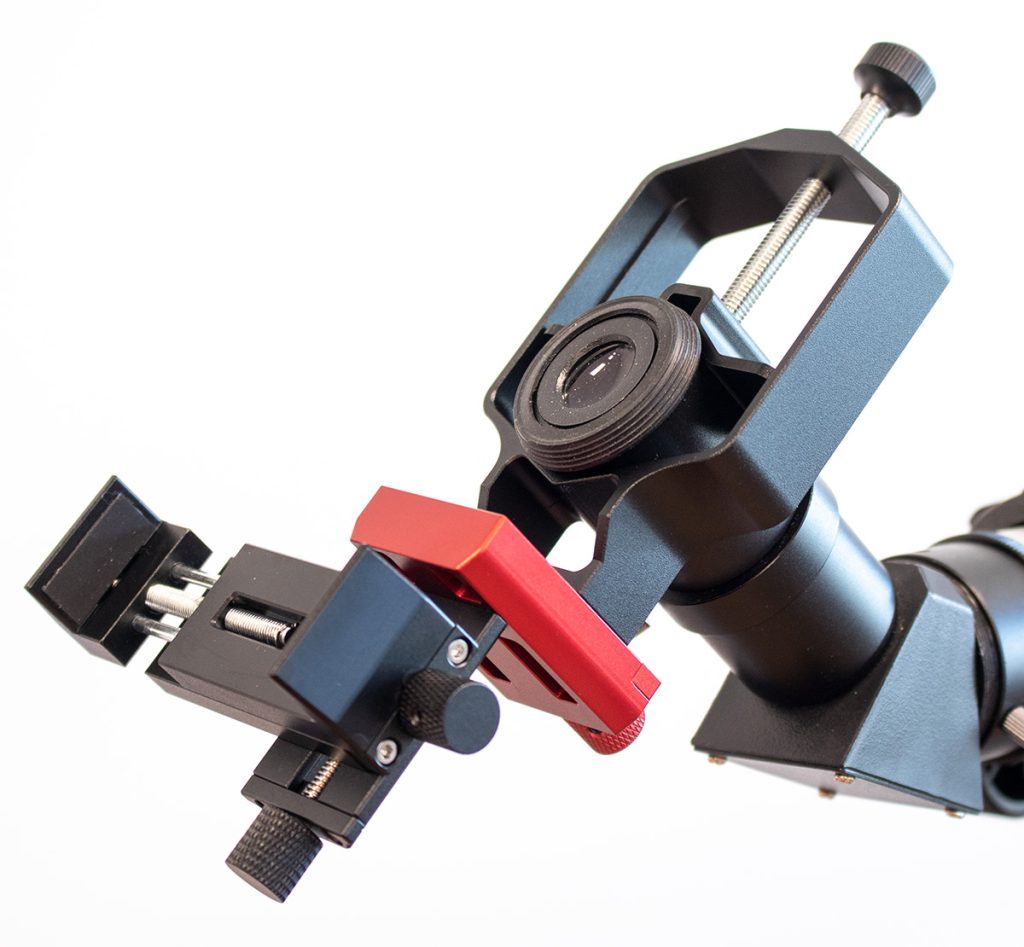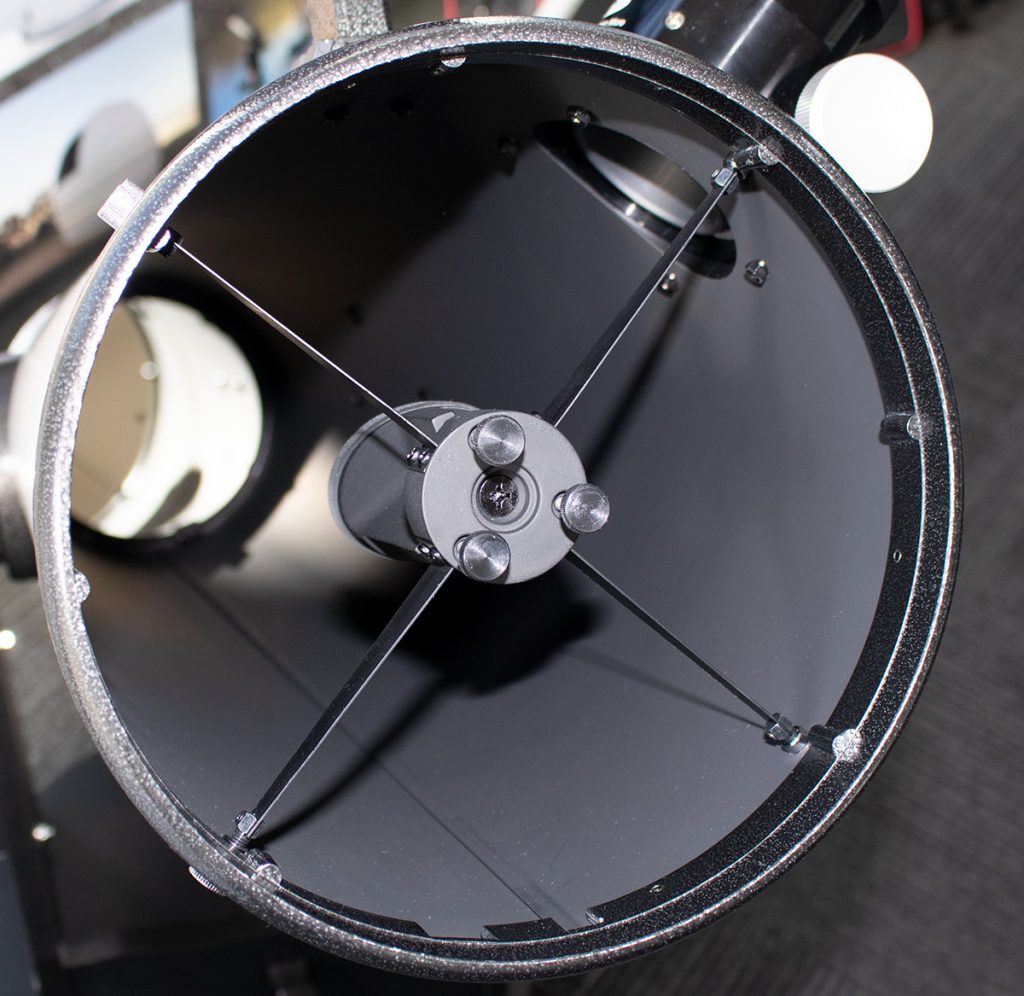
Diffraction spikes appear in photos taken with Newtonian and some other types of telescopes. They happen when you have a secondary mirror in the middle of the telescope tube. This mirror reflects the light coming back from the primary mirror, directing it towards the focuser, which houses the eyepiece or camera. The secondary isn’t able to float there on its own, and so it’s held there by a structure which is normally called a “spider”. You can see a typical four-vane spider in the photograph to the left.
Having these vanes in the light path gives rise to the diffraction spikes.
What causes diffraction spikes?
Diffraction spikes are caused when incoming light meets some sort of obstruction – in this case the straight vanes that support the secondary mirror. The light is scattered perpendicular to that obstruction, that is, if the vane runs up-down, the light is scattered left-right. This results in the effect of the star having lines sprouting from it.
You can see a few of these spikes my poorly-coloured image of Southern Albireo. They’re so common that most people don’t even notice them. It’s sometimes known as the “Star of Bethlehem” effect.
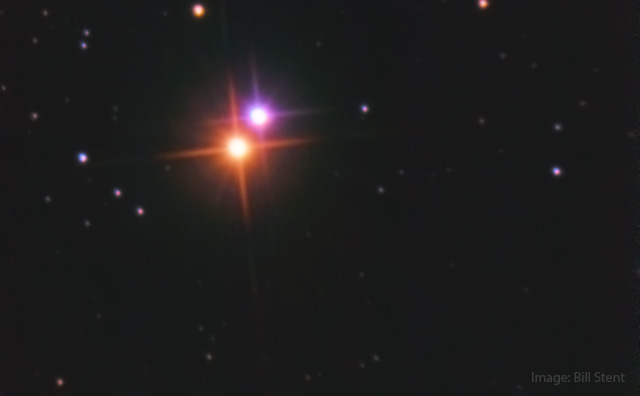
Some people hate diffraction spikes, and others love them – to the point of simulating them. You can do that with a special filter, or you can even stretch a couple of pieces of cotton across the front of your refractor!
But what do diffraction spikes mean and what do they show about the telescope?
How many spikes should you see?
The number of spikes in your image is equal to twice the number of spider vanes, but very often diffraction spikes are overlaid on each other, so it’s hard to count them. But you can normally guess the shape of the spider by the number of diffraction spikes each bright star has. Most Newtonians have four vanes, so each star will have eight spikes. However, because pairs of vanes are on the same angle, the spikes are overlaid and it should look like four. Famously, the James Webb Space Telescope produces eight (six in a regular pattern with two smaller ones at 90 degrees).

Quality of the spikes
But if your spider isn’t adjusted perfectly, your diffraction spikes are going to look … messy. Those bright stars are going to give rise to spikes that diverge, don’t quite hit the middle of the star, or otherwise look ragged. This is what happens when your spider isn’t precisely in the centre of the tube and on the optical axis, so each pair of vanes isn’t pointed perfectly at each other. If the vanes themselves are bent or twisted, even slightly, this can also affect the spikes. And there are other things, like mirror clips or intrusions into the tube, that affect spike-like flares from your bright stars.
Getting good diffraction spikes
Proper adjustment of spider vanes can be devilishly difficult. Some high-end telescopes avoid the problem by using solid spiders, cut from a single piece of aluminium. This prevents vanes from bending, and the secondary from moving off the optical axis. It also makes the spider much more robust so not only will it hold collimation longer, when you do need to adjust it, the spider won’t flex so the adjustment is much easier.
You can see the solid spider in this partly-constructed Astroworx telescope here.
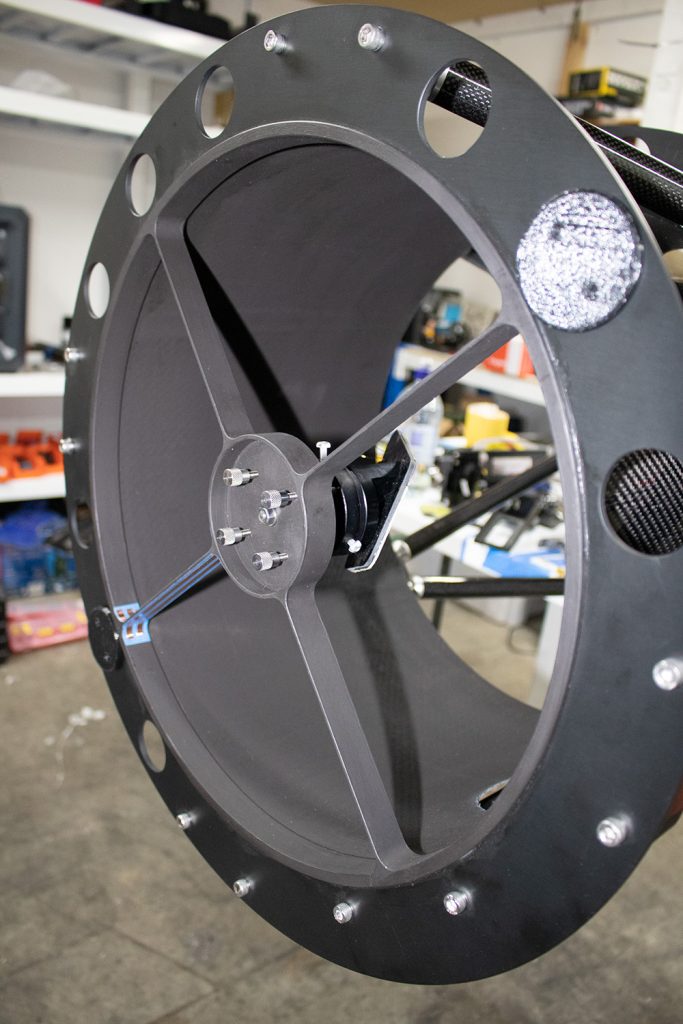
…and the result?
Have a look at this detail from an image of a bright star. The spikes are straight, fine and not split. It was taken with an Astroworx 12″ f/4 telescope with a solid spider, which you can see on the right. The spikes are so good that you can even see the spectral pattern of the star that is causing them.
This is the gold standard for Newtonian astrophotographs.
